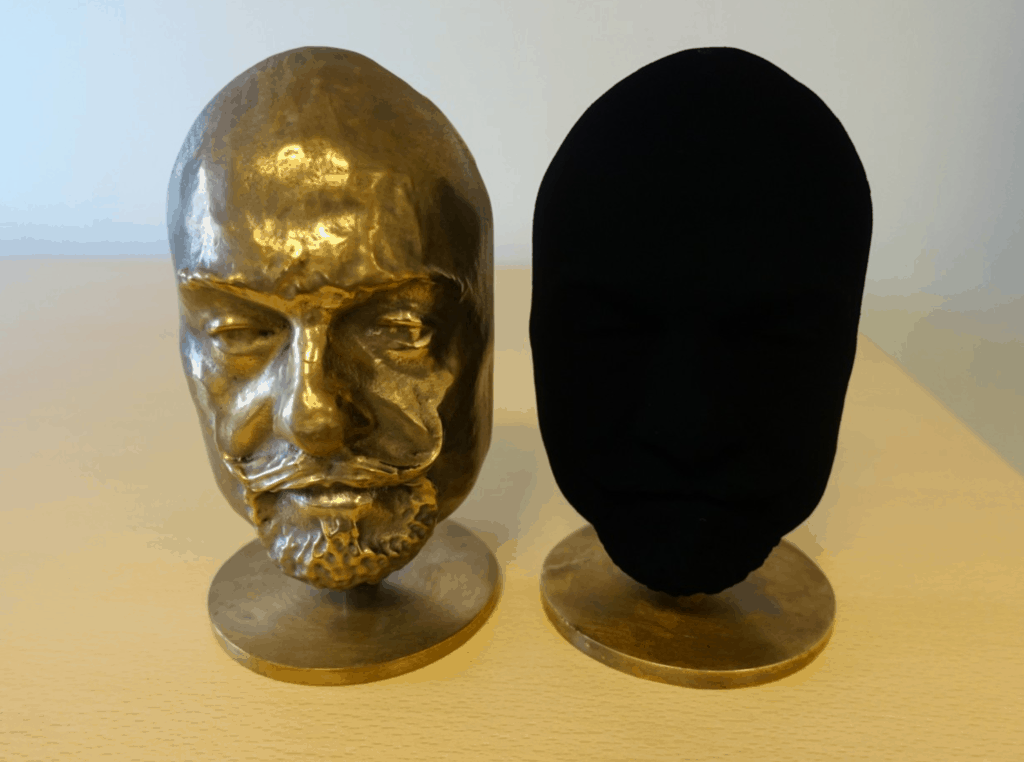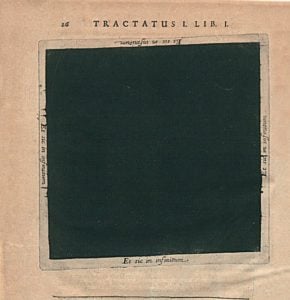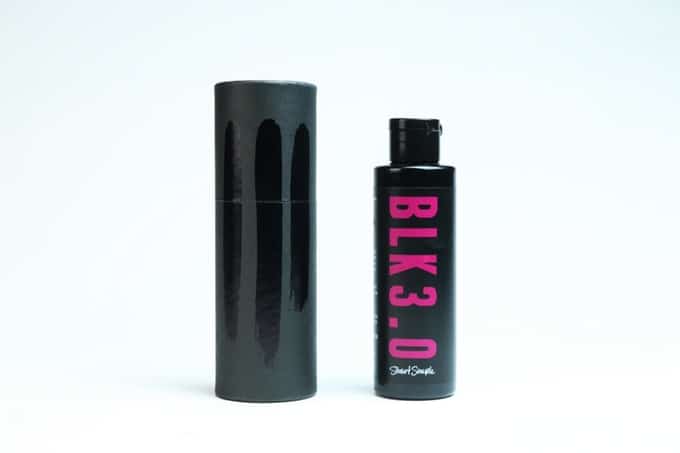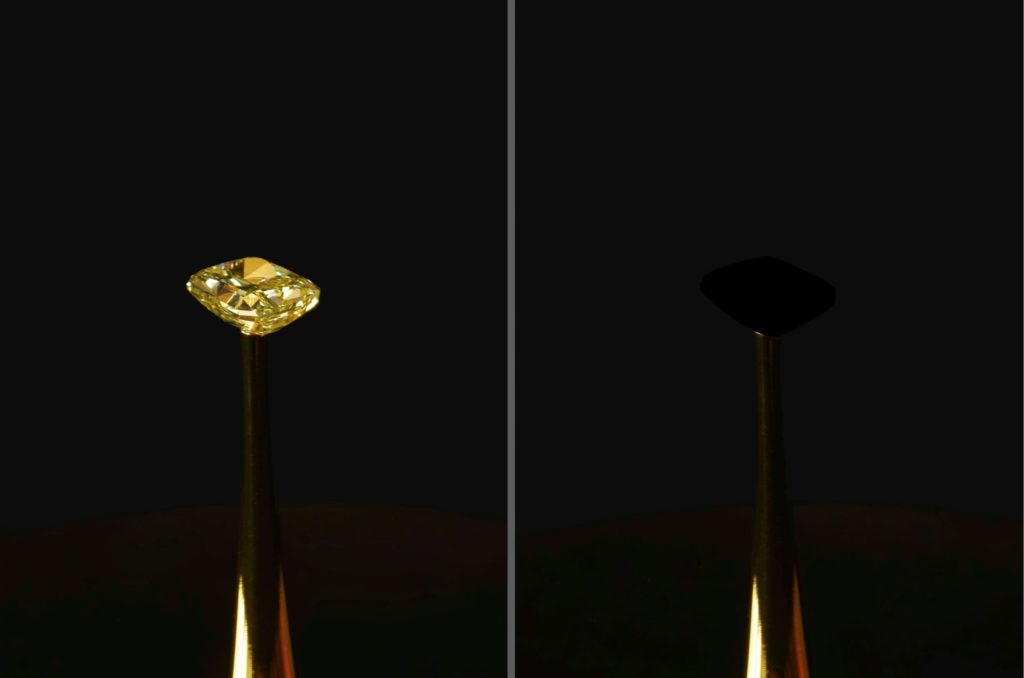Articles and Features
In search of the blackest black

“With all their damned talk of modern painting, I’ve been forty years discovering that the queen of all colours is black “
Pierre-Auguste Renoir
Try to think of the blackest thing you have ever seen. Can you imagine what could be blacker? Is there something even blacker, darker or more impenetrable than black?
Technically, black is not even a colour, but the subtraction of all other colours, the total absence of light. In fact, what we are used to seeing in our everyday life when we think we see black, is more dark grey than a real, true black. Nevertheless, humankind has always been obsessed with what it can signify and psychological studies have shown the extent to which it is loaded with manifold associations.
It is therefore not surprising that in Robert Fludd’s Utriusque cosmi maioris scilicet et minoris metaphysica, published in 1617, when dealing with the subject of metaphysical iconography of the infinite, a completely black square is depicted with the inscription “Et sic in infinitum” (“And so on to infinity”) on each side.

Be it symbolic of infinity, negation, creation or destruction, black has always captivated the attention of artists. One only has to think of Goya’s Black Paintings (1819-1823), but also Malevich’s Black Square (1913), or even the painting Abraham by Barnett Newman (1949).
It is endemic and essential to the world of art; the means to arouse emotions, evoke various psychological conditions, but also in a practical way to create shadow, line, volume, and perspective. And it is precisely because of its functionality, as well as its evocative power that artists have always pursued a search for an ever blacker black. Even recently, this long-standing quest has been the basis of an entertaining art world controversy. This material arm’s race began in 2014, when at the time what was said to be the blackest black became available as a product that could be made applicable to art production.

“We think is the blackest material in the universe, after a black hole…It’s literally as if you could disappear into it”
Anish Kapoor
The beginning: Vantablack
In 2014 Surrey NanoSystems, a British nanotech company, developed the darkest material ever created, called Vantablack. It is not a paint, but a super-black coating made up of something called a “forest” of carbon nanotubes. These nanotubes form a molecular trap for light. Just imagine taking a walk through a forest with trees three kilometres tall, can you imagine how dark it would be? This is exactly how a surface coated in Vantablack reacts when hit by light: the light keeps ‘bouncing’ from tube to tube and cannot escape, since the tubes are incredibly long in relation to their diameter and the space between them. This nearly total absorption of light creates an almost perfect black surface able to hide any relief or surface modelling, resulting in the visual effect of near total and opaque flatness.
The material was initially developed for military and astronautical purposes, to make stealth aircraft and satellites undetectable for radar and telescopes. But its potential has not gone unnoticed by the art field. The British artist Anish Kapoor was immediately alerted to its possibilities and made a deal with Surrey NanoSystems. Since then he has owned exclusive rights to use Vantablack. For some time the artist had been working on the creation of negative space, playing with holes and reflections, and so who better than he to unlock the kind of expressive potential inherent in this material? Whilst the idea of this kind of density perfectly fits Kapoor’s exploration of the void and his love for deep saturated colours, the kind of protectionism effected by him was not exactly what the rest of the artistic community had in mind when considering the possibilities of the material for their purposes.
Artfight: who owns the blackest black?
Even though this was not the first time an artist had obtained a unique licence to use a particular colour, Kapoor’s deal raised eyebrows in the art world. Among the most incensed were artists Christian Furr (“We should be able to use it, it isn’t right that it belongs to one man”) and Stuart Semple. The latter, partly out of spite and partly to highlight what he considered Kapoor’s selfish and churlish stance, developed production of the “world’s pinkest pink”, in the process banning Kapoor from buying it. To be fair, this dispute was in part founded on a series of misinterpretations. On the one hand, Vantablack is not a ready-to-use material and cannot be found on the shelves of stationery or artist supply shops. On the contrary, it requires a highly accurate process in a scientific laboratory to be applied and is also described as “potentially dangerous” as well as “generally not suitable for use in art”.
Therefore, all in all, Kapoor’s deal with the company could be seen as a collaboration aimed at properly exploring the artistic potential of Vantablack before making it available on the market. Moreover, as a highly successful artist with the resources to engage in such developmental collaboration his actions were always likely to engender envy from the artistic community. On the other hand, Kapoor has exclusive usage rights in the field of art and even then only to one version of the material, named Vantablack S-VIS. In fact, another version, Vantablack Vbx2, has been used by British architect Asif Khan, to spray a temporary pavilion for the Pyeongchang Winter Olympic Games in South Korea, described as an “angular black hole, a portal to a parallel universe”.

Nevertheless, the conflict rumbled on. In December 2016, Kapoor posted on Instagram a picture of his middle finger dipped in Semple’s pinkest pink. In retaliation, Semple created the glitteriest glitter, made from crushed glass so that Kapoor couldn’t dip his fingers in it.

The cat fight drama continued with Semple presenting, at the beginning of 2019, his last version of a super-black, named ‘Black 3.0’, which he claims to be the mattest, flattest and blackest acrylic paint in the world. Again he banned Kapoor from purchasing it. So if you have any intention of buying it, be aware that you will have to declare that you are not Anish Kapoor and you are in no way affiliated to him.

Latest developments
The pettiness of this never-ending controversy has recently been overtaken by further scientific findings. In September 2019, the creation of the newest ‘blackest black’ of all was announced: it is purportedly ten times blacker than Vantablack (it absorbs 99.995 % of the incident light against 99,96% of Vantablack). This incredible scientific discovery was actually driven by an artistic project, the Redemption of Vanity by Diemut Strebe, artist-in-residence at MIT’s Center for Art, Science, and Technology. The artist had been working on it for five years and her idea was to cover an expensive diamond – the shiniest material on earth – with carbon nanotubes – the blackest black on earth – to make it “disappear”.
The project is based on the Heraclitean inspired concept of the most extreme opposites, unified in one artwork: both the diamond and the nanotubes are, in fact, made of the same element carbon, but their dissimilar atomic structures make them so different in their appearance. Though, the Redemption of Vanity, involving the devaluation of a $2 Million diamond, is also a strong statement and a challenge to the art market.
With this goal in mind, Strebe proposed Professor Brian Wardle of MIT’s Necstlab and his team to develop an alternative method to grow nanotubes bypassing Kapoor’s patent and he, together with his team, actually managed to do so. As it turned out, they have produced the blackest material ever (to date).

The material is now available for everyone and every kind of application. So is this the ending of the story— the non-exclusive blackest black accessible to all? The room for improvement is very limited but the story is yet to reach its ultimate conclusion.
Relevant sources to learn more
10 Modern Moments in Colour
Surrey nanosystems
Anish Kapoor
Stuart Semple
Asif Kahn
MIT – NECSTLAB
Diemut Strebe- The redemption of Vanity